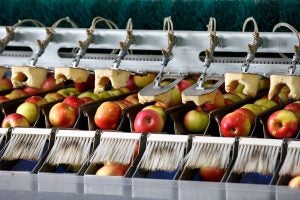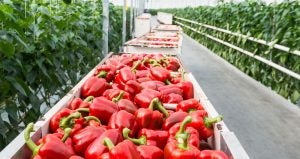In a first-of-its-kind comprehensive economic impact study on the fresh produce and floral supply in the United States, data show that the combined industry contributes to 2.2 million total jobs across all 50 states and $120.1 billion in labor income, nearly reaching pre-COVID levels.
The findings highlight that the industry plays a significant economic role in each state, adding $339.4 billion to the national output in 2022. In addition, federal, state, and local taxes generated by the industry, and the spin-off industry sales their activity generates, total $43.7 billion per year.
The report, titled The Economic Impact of the U.S. Fresh Produce and Floral Supply Industry, was compiled by Jack Kleinhenz of Kleinhenz & Associates on behalf of the International Fresh Produce Association and was released early today. It’s the first time the trade organization representing the entire fresh produce and floral supply chain has conducted such a broad exploration and research into its in U.S. jobs, taxes, and wages.
“Fresh produce and floral products are important to every single American as we not only seek to provide nutrients to keep people healthy, but employ millions of Americans and pump billions of dollars into the U.S. economy,” Cathy Burns, CEO of IFPA, said in a news release.
In a video conference with media, Burns said that the economic impact study will be used in guiding policy advocacy centered around the next Farm Bill, nutrition, immigrant labor, and food safety.
“Congress must be aware of the size and scale of our industry,” she said. “We are a significant national employer and critical to the whole food system.”

Nearly 1.2 million jobs are directly tied to the industry’s 2022 operations. The absolute number of employees involved in the fresh produce and floral supply industry had declined by 4 percent from 1.18 million workers in 2017 as a result of a COVID-related slowdown. The industry had 1.13 million workers in 2021 and is tracking to reach pre-pandemic levels this year.
The industry’s economic impact reaches all 50 states and the District of Columbia to varying degrees depending on factors such as each state’s industry mix, wage structure, spending and saving patterns, and connections to other economies. Twenty-nine states have more than 10,000 jobs attributable to the industry; only 10 states have less than 4,000. Impact encompasses a diverse range of activities and products that extends beyond farmers and producers, including marketing and distribution, retail, and food services.
California leads the way, representing 404,468 workers, or 35 percent of the industry’s employment. Washington follows with 99,320, and Florida with 82,013 workers.
Examining total employment in detail shows over 600,000 jobs, or 54 percent of the industry, are workers in the production sector. Wholesale and retail employment, which includes a variety of fresh fruit and floral operations, reached 434,000 and accounts for 38 percent of the industry.
“Support for the industry has never been more important,” said Burns, who noted that only 1 in 10 Americans eat the recommended daily allowance of fruits and vegetables. “The treatment for the four most prevalent diet-related diseases adds $1.4 trillion dollars to the U.S. national debt each year.”
In the video conference, she asked poignantly: “The question is: Do we want to invest in health, or do we want to invest in health care.”

IFPA, which bills itself as seamlessly integrating world-facing advocacy and industry-facing support, will be participating in the White House Nutrition Conference scheduled for next week, where they expect to be a part of a lineup of generation-defining ideas and solutions to improve access, appeal, and consumption of fruits and vegetables.


